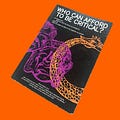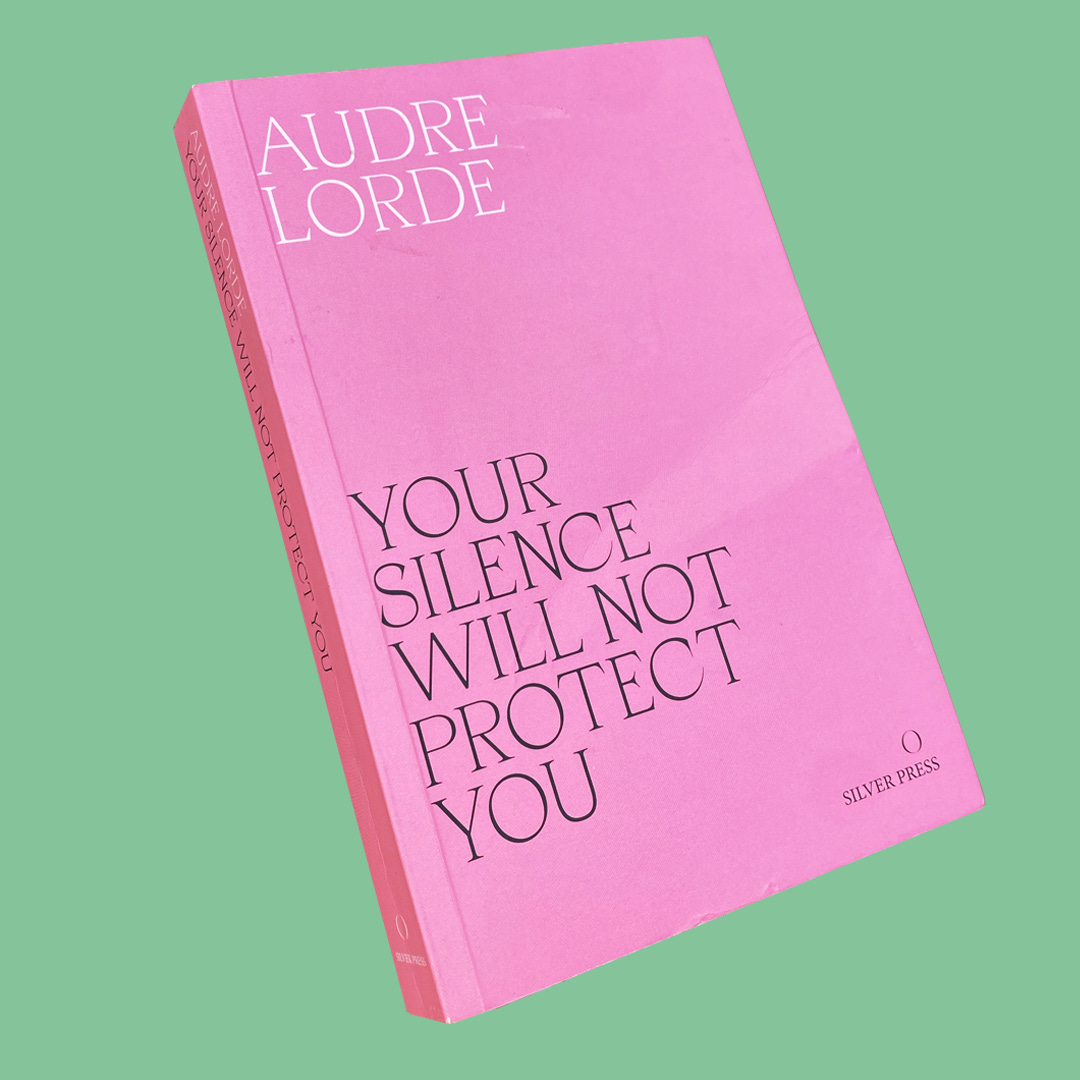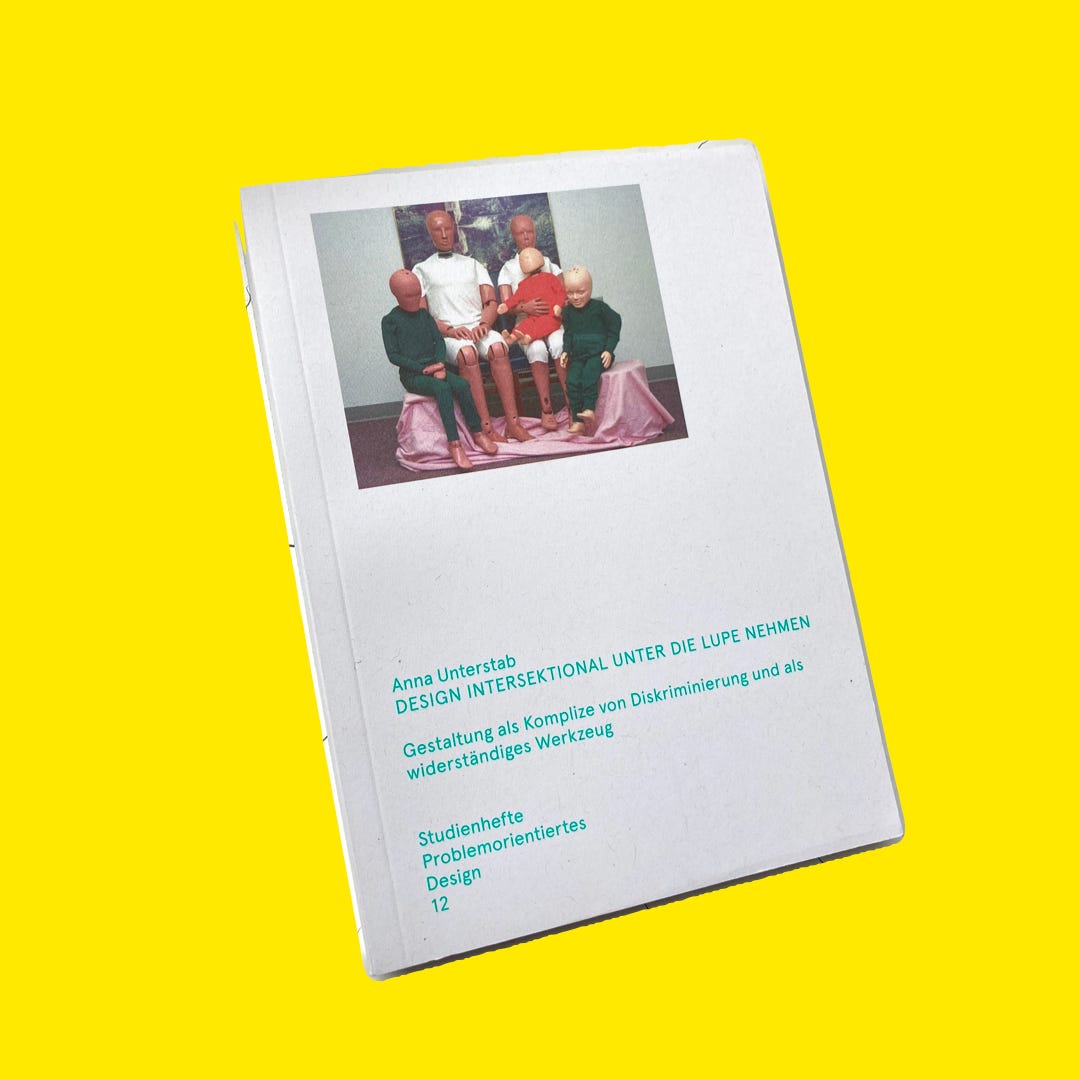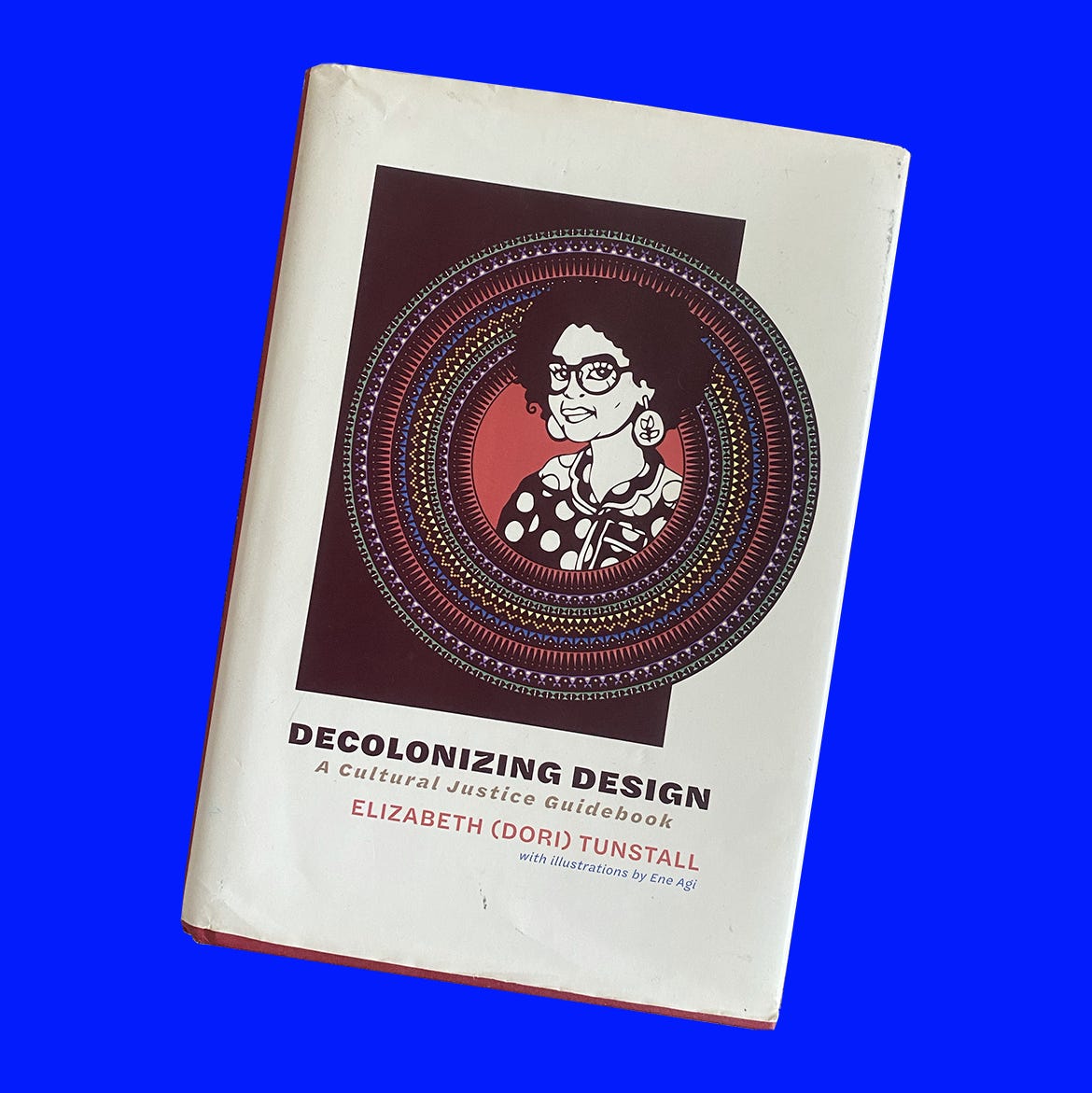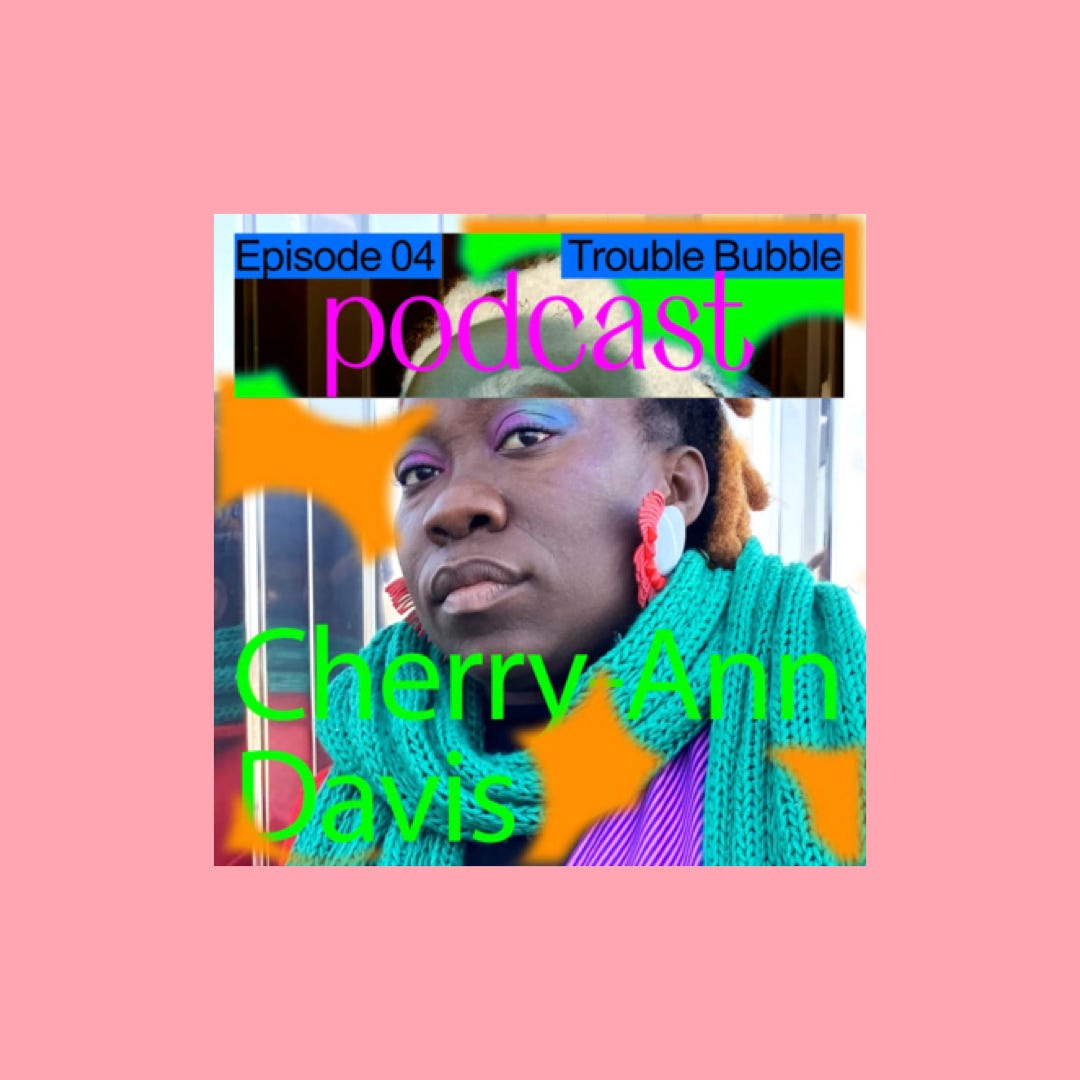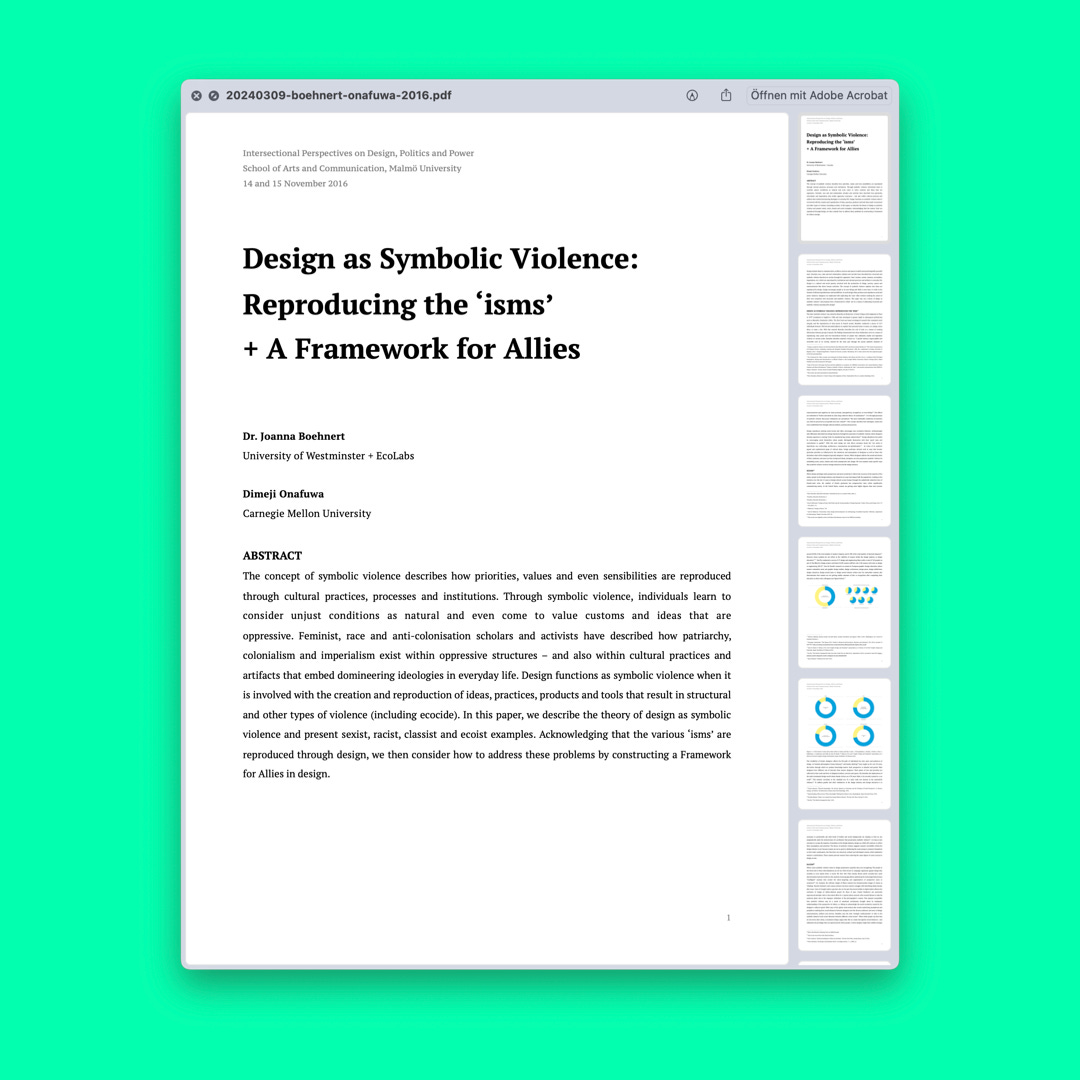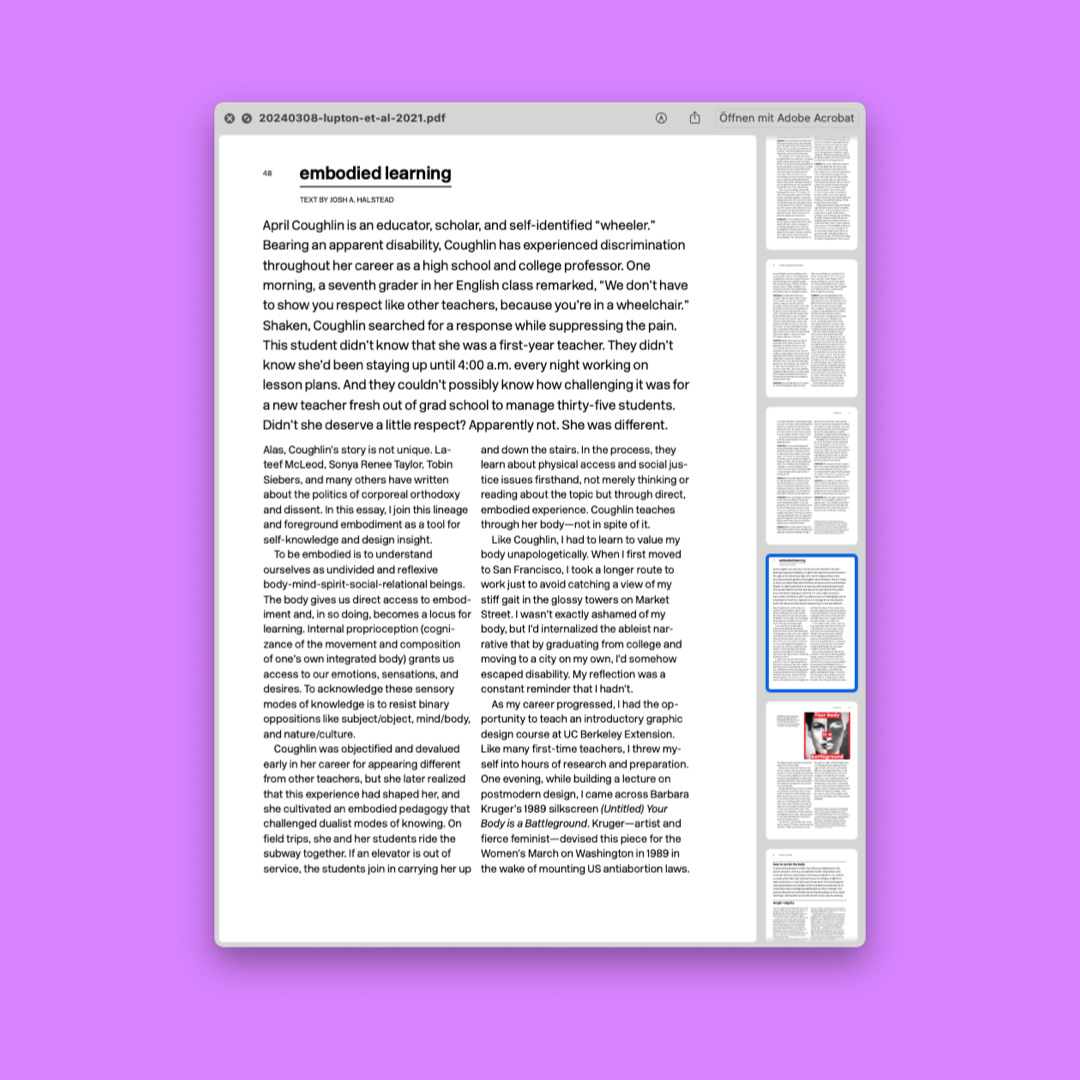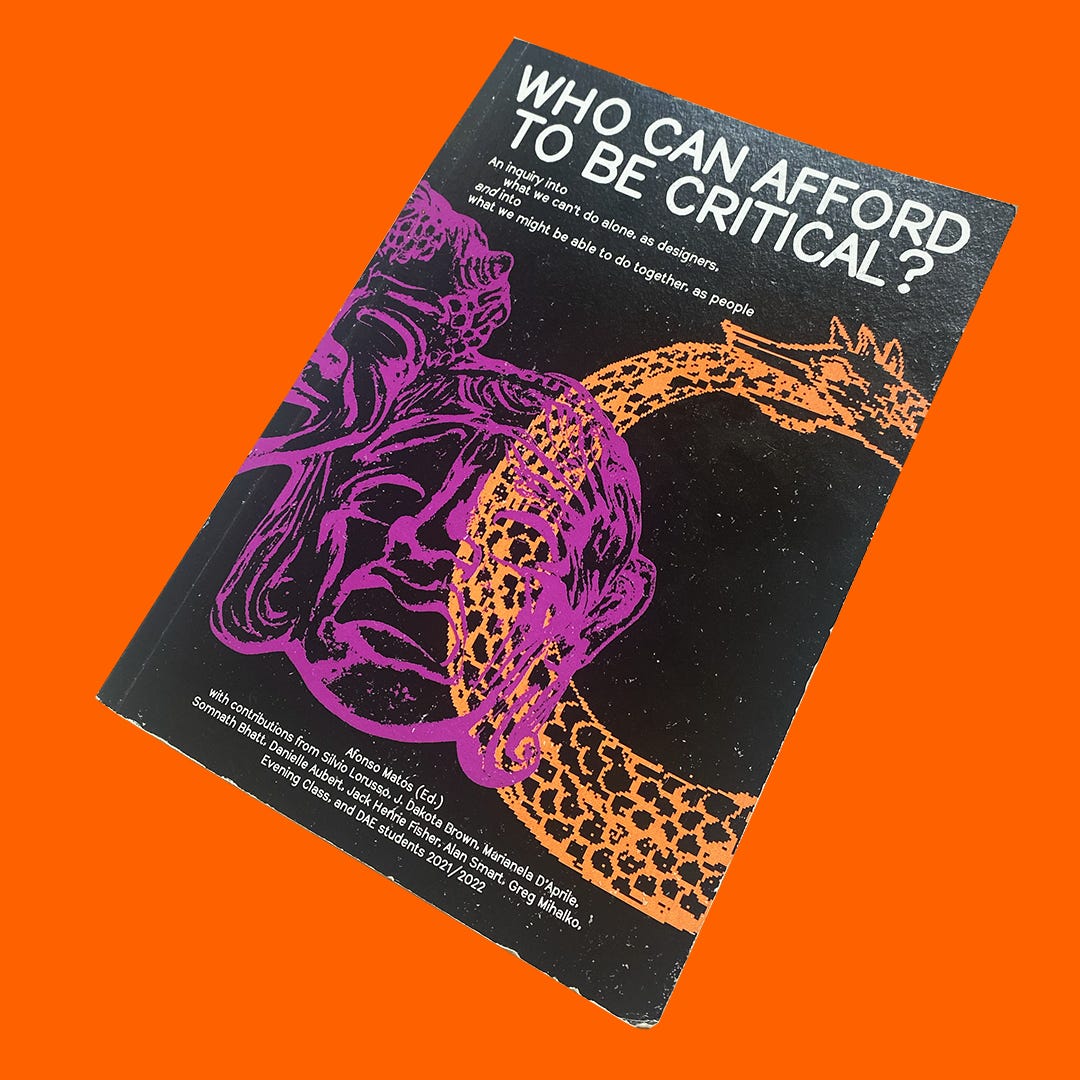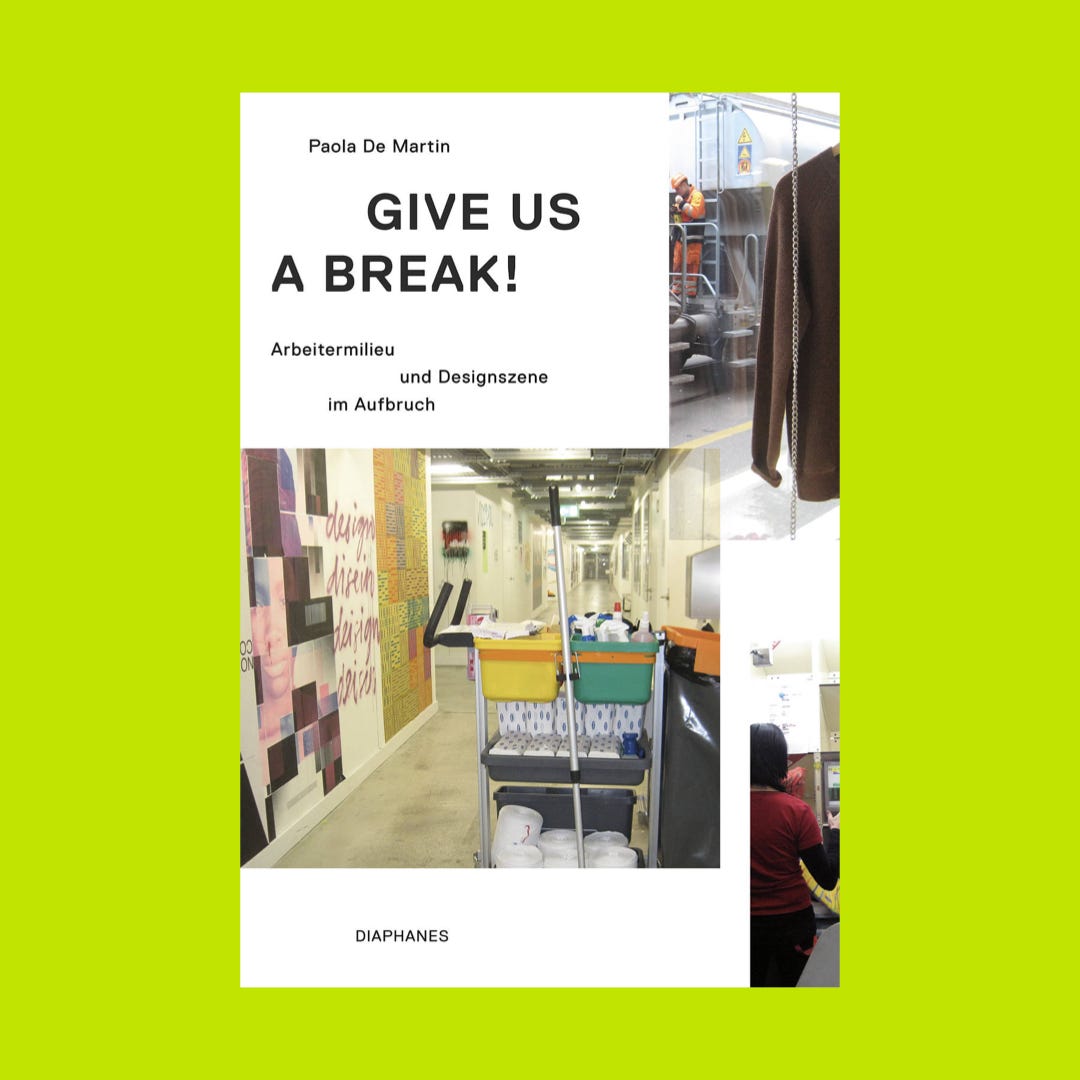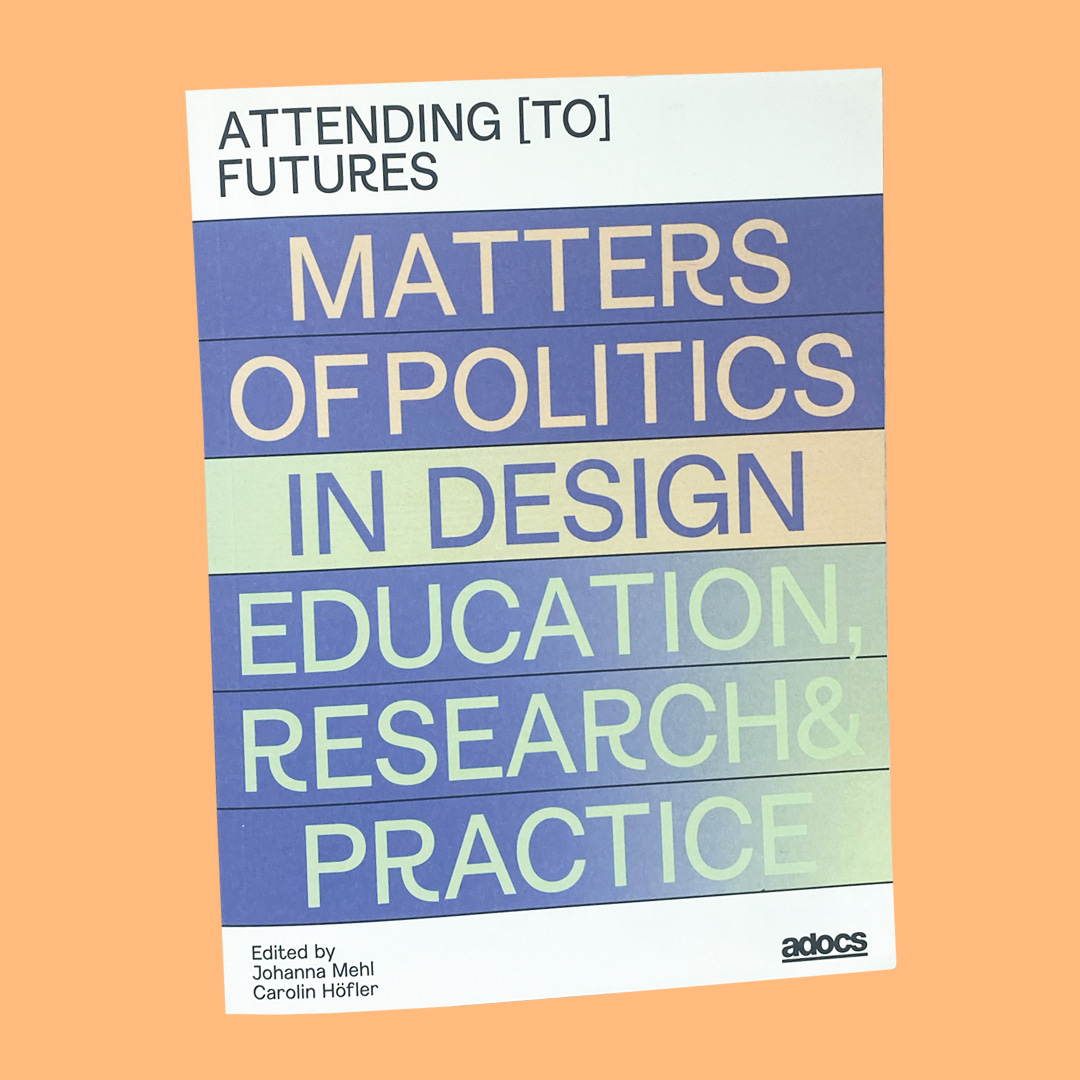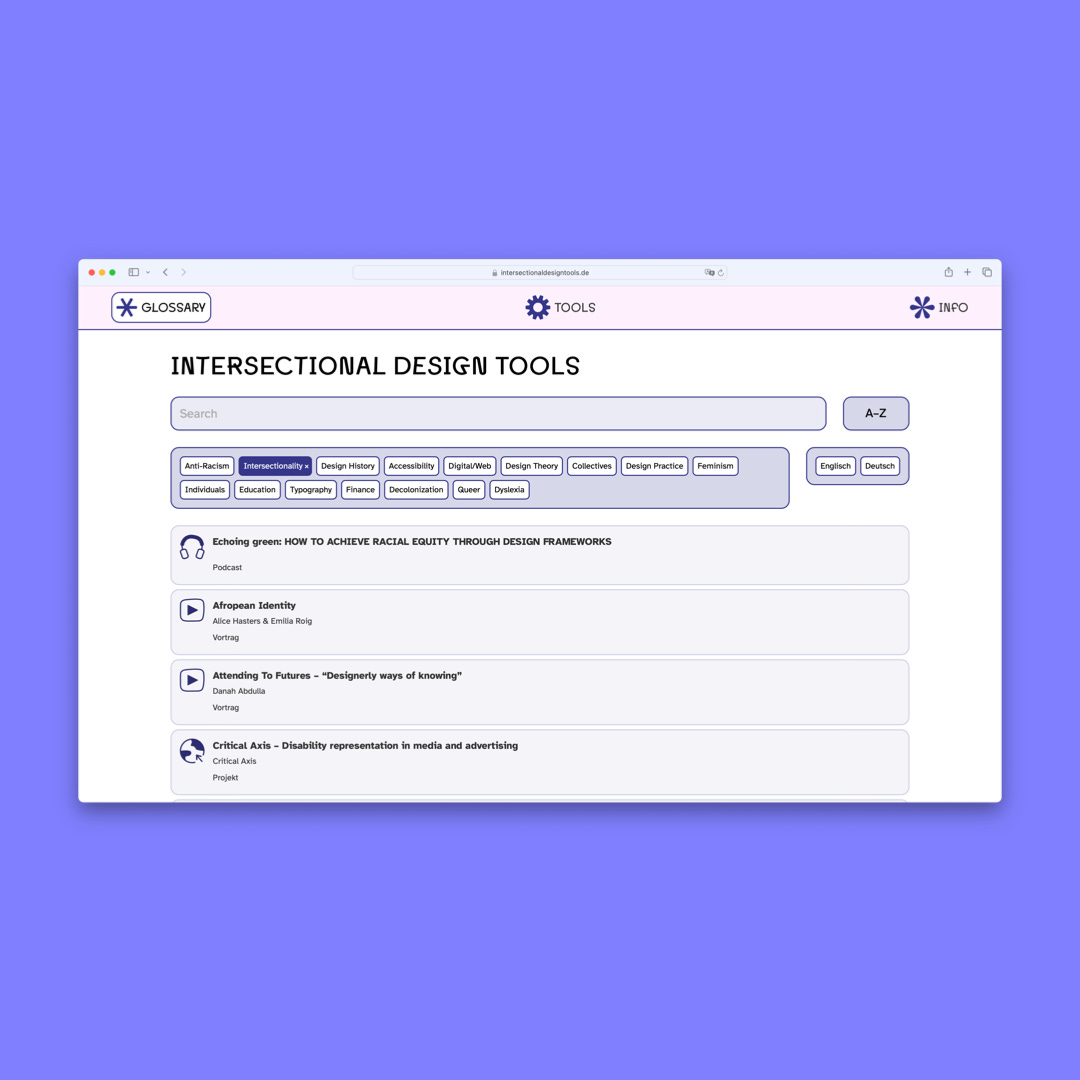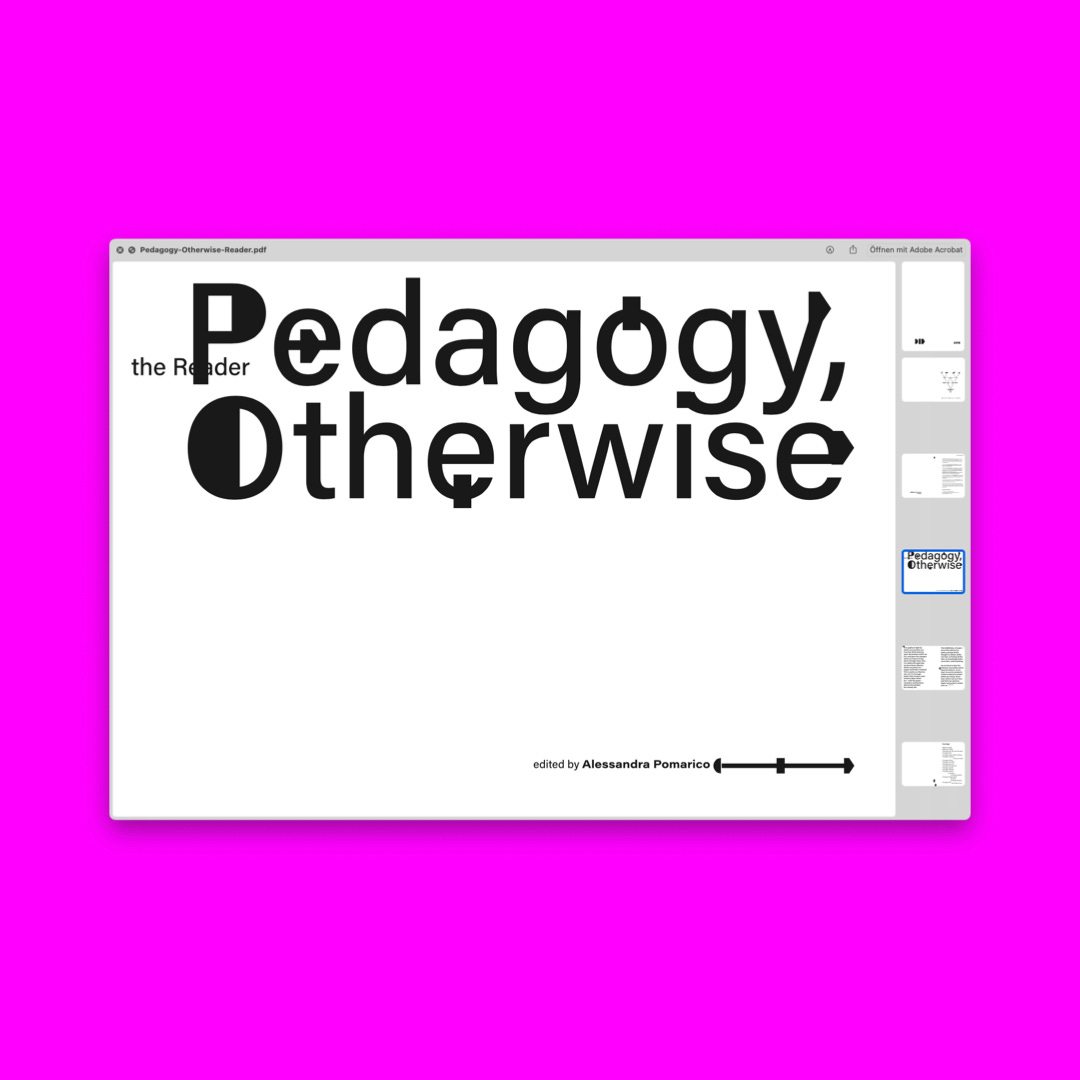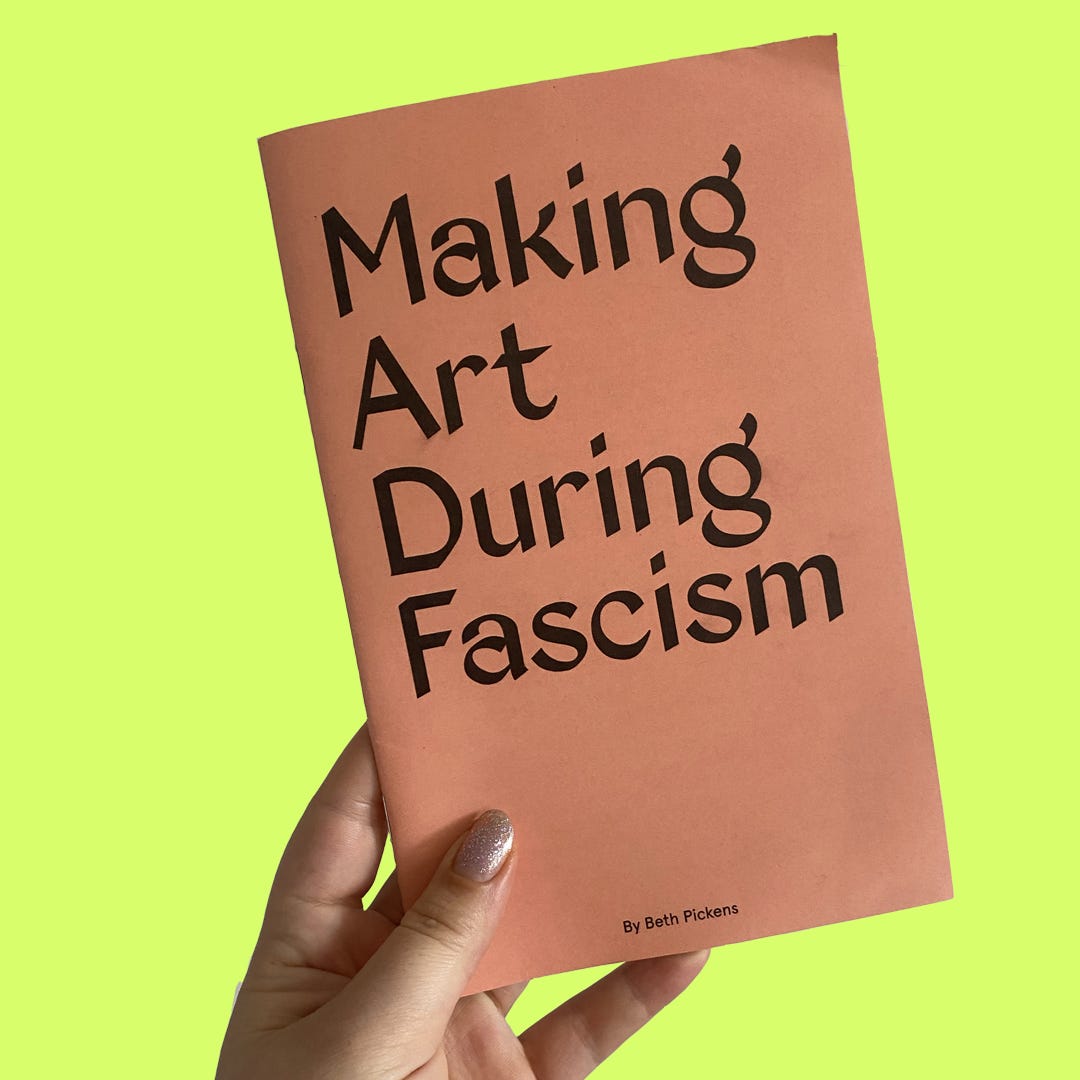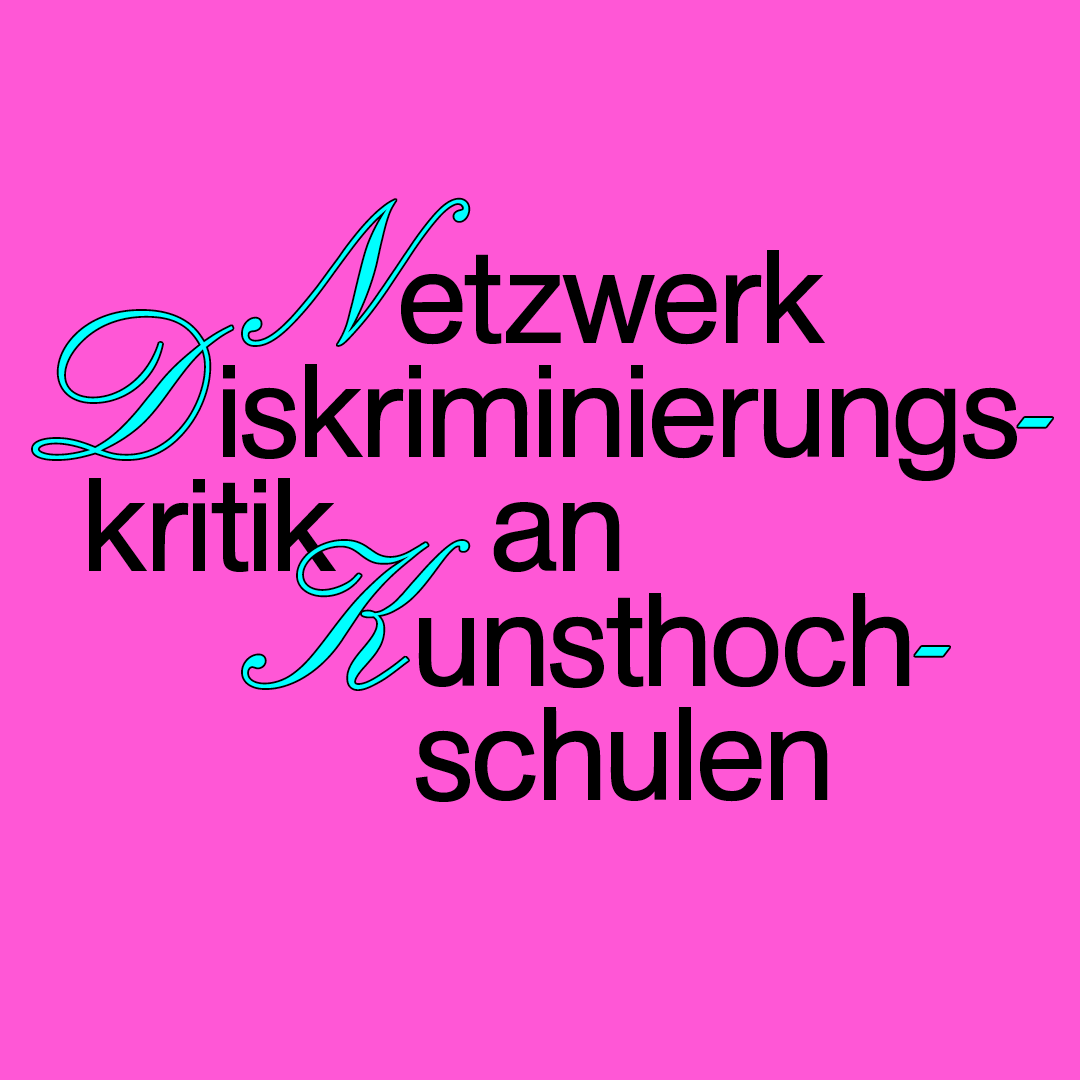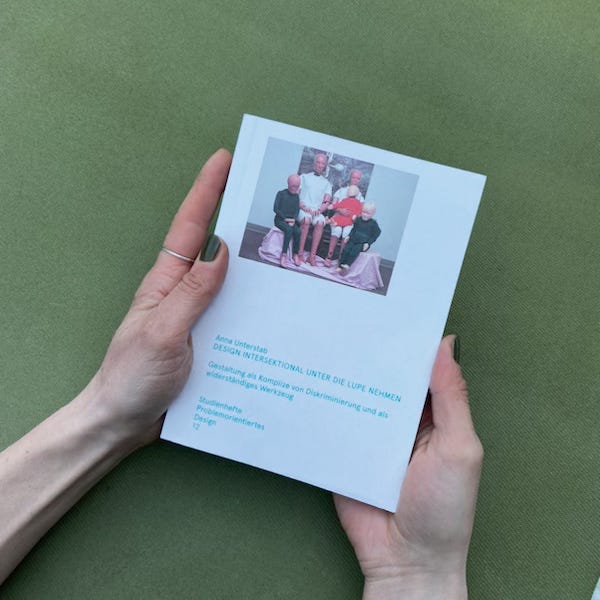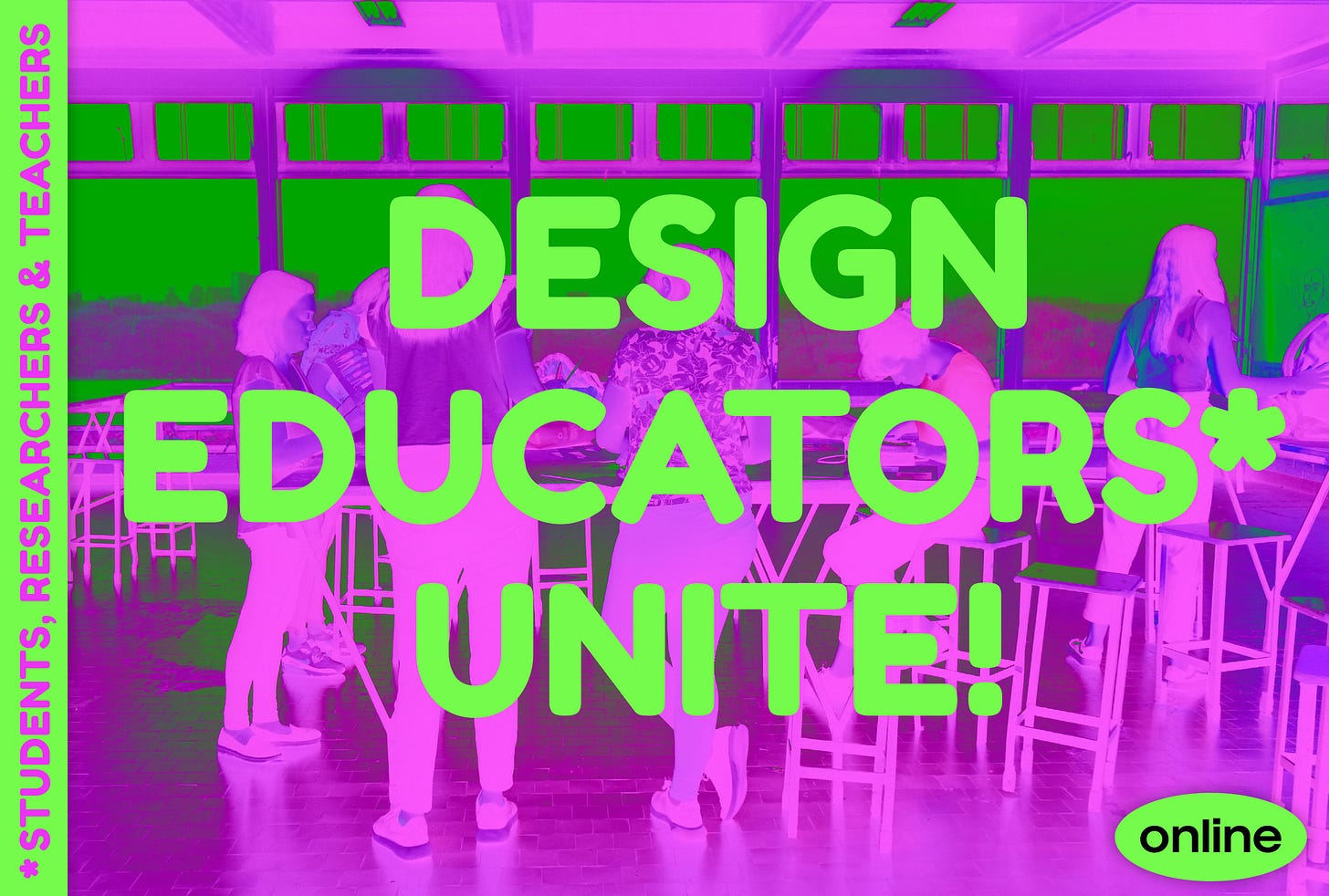Teaching Design – Infrequent Newsletter #6
Dear design teachers/learners and bibliography-lovers,
thanks for subscribing (or staying subscribed) to this mailing list and following the research project!
This sixth fully packed newsletter edition is curated in collaboration with Anna Unterstab, author of Design intersektional unter die Lupe nehmen – Gestaltung als Komplize von Diskriminierung und als widerständiges Werkzeug which was published in January with Adocs.
During recent years our paths have crossed on different occasions and whenever we met we connected through sharing our experiences about potentials and pitfalls of working in design institutions as feminist killjoys.
During her MA studies in Design Anna was part of a feminist seminar in which she was introduced amongst others to writings by Black feminist activists of the 1970–1990s. These texts helped her make sense of the power structures constituting design education in art schools. In order to understand one's own positionality as a designer and to critically question one's understanding of design, an intersectional understanding of power is indispensable.
Kimberlé Crenshaw's concept of intersectionality emerged at the intersection of "race/class/gender" in order to make the complex experiences of discrimination of Black women visible and to create an analytical framework for multiple discrimination. Anna’s book offers an overview [in German] of where and by whom design and intersectionality are already being thought and practiced together. It presents alternative design practices, techniques and collectives, such as Respectful Design by Dori Tunstall & colleagues and the Design Justice Network and Sasha Costanza-Chock, which reinterpret design as an emancipatory tool. The theoretical contextualization accompanied by practice-based interviews with intersectional feminist designers examine the potentials of "designing otherwise".
This newsletter is inspired by Anna’s learning journey while writing her book. More suggestions by Anna can be found in our Teaching Design bibliography.
Warm wishes and until next time,
Anna und Lisa
P.S. This time we have added a list of upcoming events related to design education at the end of this newsletter.
Added to the bibliography
Audre Lorde (2017): The transformation of silence into language and action, first delivered 1977. In: Your Silence Will Not Protect You. London: Silver Press.
"And where the words of women are crying to be heard, we must each of us recognise our responsibility to seek those words out, to read them and share them and examine them in their pertinence to our lives. That we not hide behind the mockeries of separations that have been imposed upon us and which so often we accept as our own. For instance, 'I can't possibly teach Black women's writing - their experience is so different from mine.' Yet how many years have you spent teaching Plato and Shakespeare and Proust? Or another, 'She's a white woman and what could she possibly have to say to me?' Or, 'She's a lesbian, what would my husband say, or my chairman?' Or again, 'This woman writes of her sons and I have no children.' And all the other endless ways in which we rob ourselves of ourselves and each other.
(...) The fact that we are here and that I speak these words is an attempt to break that silence and bridge some of those differenees between us, for it is not difference which immobilises us, but silence. And there are so many silences to be broken." (p. 5–6)
Anna Unterstab (2024): Design intersektional unter die Lupe nehmen – Gestaltung als Komplize von Diskriminierung und als widerständiges Werkzeug. Hamburg: Adocs.
"Eine freie und gleichberechtigte Gesellschaft ist nicht selbstverständlich, deshalb müssen wir uns weiter aktiv für eine freie Wissensproduktion und den Schutz der Rechte von marginalisierten Gruppen einsetzen. Ein kleiner Beitrag dazu ist dieses Buch, das dabei helfen möchte, eine deutschsprachige Grundlage für ein intersektional informiertes und so potentiell wirkmächtig gegen Diskriminierung arbeitendes Design zu bilden.
Dieses Studienheft verknüpft die Disziplin Design mit der Intersektionalitätstheorie. Es gibt einen Überblick darüber, von wem und wie Design und Intersektionalität bereits in Beziehung gesetzt werden und beleuchtet die Leerstelle zwischen kritischer Designtheorie und -praxis. Der Fokus dieses Textes liegt auf einer gegenwärtigen transnationalen kritischen Designtheorie-Bewegung, die daran arbeitet, Design als Disziplin mit intersektionalen, dekolonialen Ansätzen und Indigenem Wissen zu verändern und gerechter zu machen." (p. 16–17)
Elizabeth (Dori) Tunstall (2023): Decolonizing Design – A Cultural Justice Guidebook. Cambridge: The MIT Press.
"To be clear, the sentiment in Europe, that universal humanity could be manifested through design forms, in which the ethnic and national markers reified national differences were absent, failed. But it was effectively realized through European colonization, in which Indigenous, Black, and other non-European practices of making were deemed inferior, outright prohibited, or systemically erased in order to maintain a culture of white supremacy." (p. 60)
Trouble Bubble – Design as Critical Practice: Trouble Bubble x Cherry-Ann Davis. Podcast by Designathon, 22.12.2022.
"I started to think about: What were all the perspectives you need to consider to not be disrespectful to other cultures? (...) [the 3-P-paradigm] draws on the concept of intersectional feminism by inviting to consider yourself from three perspectives that we are all impacted by: power, position and privilege. So I ask: What is my relationship with and to power? Does my position grant me access? And: Do I have privilege?"
→ Access the podcast on Spotify here.
→ Access the podcast on Listen Notes here.
Joanna Boehnert, Dimeji Onafuwa (2016): Design as Symbolic Violence: Reproducing the ›isms‹ + A Framework for Allies. Lecture. Symposium for Intersectional Perspectives on Design, Politics and Power, School of Arts and Communication, Malmö University, 14–15.11.2016.
"The concept of symbolic violence explains how ideas are reproduced by design. Design encourages people to do new things and think in new ways: it works in the domain of influencing behaviours and sensibilities. As such design often produces and reproduces social and power relations. Designers are implicated with replicating the 'isms' often without realising the extent of their own complicity with structural and symbolic violence." (p. 2)
→ Access the paper here.
Joshua A. Halstead: embodied learning. In: Ellen Lupton, Farah Kafei, Jennifer Tobias, Josh A. Halstead, Kaleena Sales, Leslie Xia, Valentina Vergara (2021): Extra Bold: A Feminist, Inclusive, Anti-racist, Nonbinary Field Guide for Graphic Designers. Hudson: Princeton Architectural Press, p. 48–51.
"Designers often talk about 'knowing their users'. How could they achieve that without first knowing themselves? Centering helps us come home to embodied presence and, as artist and organizer Kimi Hanauer writes, 'embrace groundlessness, multiplicity, fluidity, and change'. In the process, we can become designers who are more comfortable with complexity and ambiguity." (p. 49)
Afonso Matos (ed.) (2023): Who can afford to be critical? An inquiry into what we can’t do alone, as designers, and into what we might be able to do together, as people. Eindhoven: Set Margins.
"Among a small but significant number of design institutions (mostly located in Europe, the US and the UK), a certain outlook upon the field has been taking shape. It has been given many names, but here we'll call it "Critical Design." This outlook perceives design as more than a market service: it aims to show that designers can be agents of powerful social and political change, beyond the boundaries of the commercial client-com-mission setting. From this perspective, designers are no longer meant to solve problems, but rather frame them. We are asked to shoulder the responsibility of raising awareness about the world's issues. We are encouraged to become provocateurs.
These apparently productive developments demand. however, some further investigation. Who can afford to do this type of critical work? What standard does it set for the remaining 99% of designers who must work for clients in order to pay their bills, many times bound to unregulated working conditions? Or is it that even those who do critical work are sometimes equally precarious? And that's not all. Beyond asking what the criticality discourse does to us, designers, we must also ask: what can it really do to the world? Are our critical projects changing anything or are they, ironically, doing the opposite and keeping the status quo intact? What are the limits of awareness-raising? Whose awareness is actually raised? By which visual and material means, and within which spaces?" (p. 1)
Paola De Martin (2022): Give Us a Break! Arbeitermilieu und Designszene im Aufbruch. Zürich: Diaphenes.
"Wenn Zugehörigkeit und Nicht-Zugehörigkeit zum Designfeld kollektive Erfahrungen sind, dann stehen diese im Zusammenhang mit struktureller Diskriminierung und struktureller Privilegierung, die — wie ich im Laufe dieses Projekts entdecken konnte — eine lange Geschichte haben. Wird diese nicht erzählt, entfaltet sie eine symbolische Gewalt, die uns glauben lässt, dass gemachte Ungleichheit eine ‚natürliche‘ Ungleichheit sei." (p. 19)
→ This publication is available open access here.
Johanna Mehl, Carolin Höfler (ed.) (2023): Attending [to] Futures. Matters of Politics in Design Education, Research, Practice. Hamburg: Adocs.
"Acknowledging the ways in which design (as practices, forms of knowledge, and sets of objects) is accountable for ongoing social and environmental injustices, this anthology contains contributions that envision alternative ways of exploring and designing more livable futures. Attending to these futures requires a reckoning with a multiplicity of actors and contexts, from institutional norms and regulations, to pedagogies, curricula, programs, digital tools, infrastructures, and architectural environments."
→ This publication is available open access here.
Design students of the Münster School of Design under guidance of Lisa-Marie Fechteler (2023): Intersectional Design Tools. Digital, interactive tool.
"Intersectional Design Tools is a project by design students of the Münster School of Design under guidance of Lisa-Marie Fechteler. It is a collection of resources that will hopefully help us implement intersectionality into our practice (not only) as designers."
→ Learn more about the project here.
Alessandra Pomarico (ed.) together with Eco-versities Alliance (2018): Pedagogy, Otherwise: the Reader.
"Colonialism:
Changing frames and fences can be very uncomfortable, since it demands cleaning up, stepping up and growing up. This involves being present (to the collective pain), remaining in resonance (with the call for responsibility), practicing release (of attachments to boxes, false promises and perceived entitlements), and keeping ourselves in balance (with truck loads of patience, humility, compassion, generosity and radical tenderness [iii]). Who would choose to do this? Or … can we afford to continue not to?" (p. 56)
→ Access the reader here.
Feminist Center for Creative Work (2018): Making Art During Fascism. Los Angeles: Co-Conspirator Press.
"Remember that you are in your life, the only one you have. You get to make it meaningful and well-lived each day, regardless of the political climate. People make community and beauty in the most treacherous and fascist climates."
(p. 17)
"If you are compelled to be active across multiple fronts (...), consider drawing upon a particular resource or skill you can provide across them all (i.e. offer graphic design pro bono, provide your studio as a free meeting space, sell works to benefit multiple organizations). (...) Ask organizers and organizations what they need, you don't have to guess or try figure it out." (p. 18)
Upcoming events
Netzwerk Diskriminierungskritik an Kunsthochschulen
Next meeting on 27.3.2024, 17–18:00 (GMT+1),
(online, in German)
To participate subsribe to the networks mailing list via this email:
diskriminierungskritik_kunsthochschulen-subscribe@lists.riseup.net
Book release
31.5.2024, 19:00 (GMT+1),
Design intersektional unter die Lupe nehmen – Gestaltung als Komplize von Diskriminierung und als widerständiges Werkzeug by Anna Unterstab.
proqm, Almstadtstraße 48, 10119 Berlin (in German)
Design Educators* Unite!
February – June 2024 (online, in English)
An (a-)synchronous lecture series for design teachers, researchers, and students which shares feminist practices from within, organized and hosted by Futuress.
You can register here.
ongoing Open Call
We invite contributions from you; design educators, students, alumni, researchers, pedagoges, enthusiasts and others to submit and share the sources which are reference points and/or inspiration to your practice! Your contribution will be published in our infrequent newsletter and in our text-based bibliography.
→ Find out how to contribute here.
Info
Teaching Design started as a collectively gathered bibliography focusing on design education from intersectional feminist and decolonial perspectives. Since its launch in September 2019, it has expanded into conversational formats, workshops, a temporary library and a space for reflections, which all has led to the platform in its current form.
→ Learn more about the research project here.
Currently the bibliography as well as this newsletter is curated and edited by Lisa Baumgarten unless mentioned otherwise.

